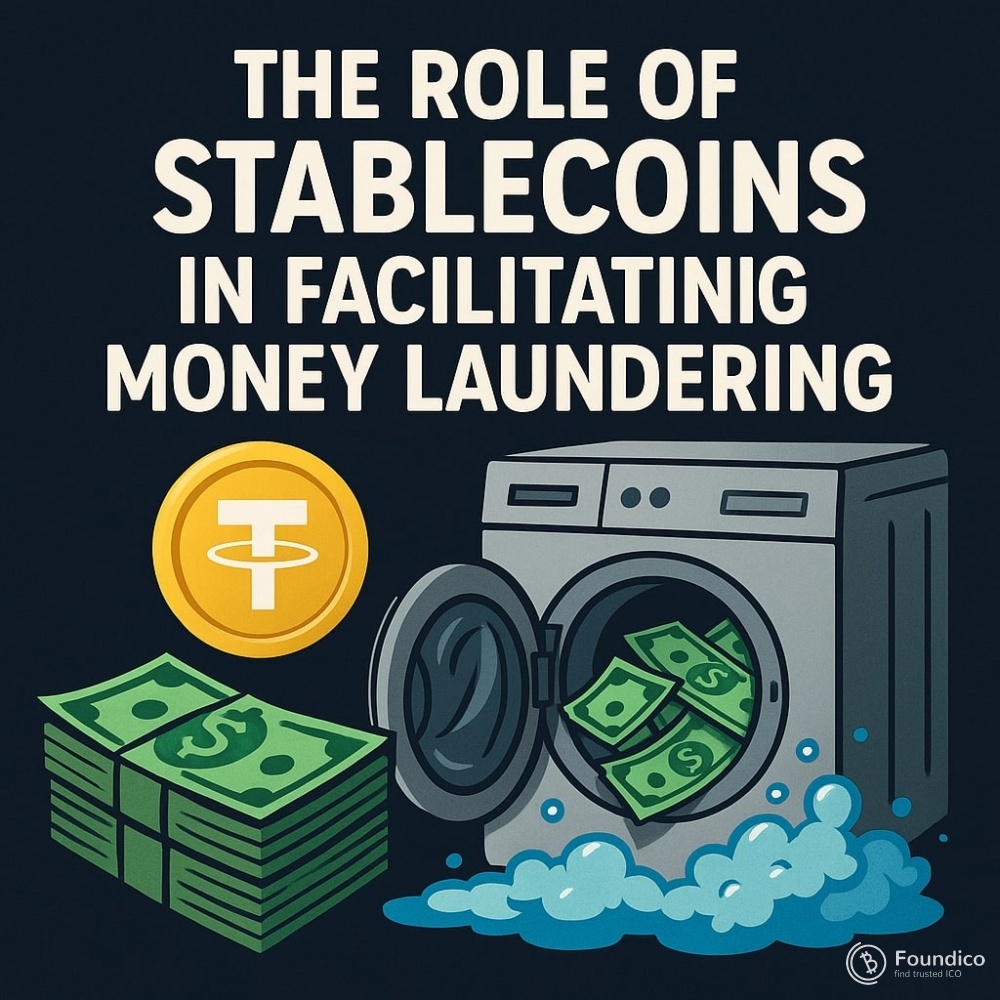The Role of Stablecoins in Facilitating Money Laundering

By Dr. Pooyan Ghamari, Swiss Economist and Visionary
As the cryptocurrency ecosystem matures, stablecoins have emerged as pivotal digital assets designed to combine the benefits of cryptocurrencies—such as fast and borderless transactions—with the price stability of traditional fiat currencies. By pegging their value to stable assets like the US dollar or the euro, stablecoins have become vital tools for traders, investors, and decentralized finance (DeFi) applications. However, this rapid adoption has also raised concerns about their misuse, particularly in facilitating money laundering and other illicit financial activities.
Understanding the role stablecoins play in money laundering is essential for regulators, financial institutions, and technology developers seeking to build safer digital financial systems.
What Are Stablecoins?
Stablecoins are cryptocurrencies that aim to maintain a stable value by being backed by reserves of fiat currency, commodities, or algorithms that adjust supply. Prominent examples include Tether (USDT), USD Coin (USDC), and Binance USD (BUSD). Their stability makes them popular for everyday transactions, cross-border payments, and as a safe haven during volatile market conditions.
Why Stablecoins Are Attractive for Money Laundering
Money laundering is the process of disguising illegally obtained funds as legitimate by moving them through a series of complex transactions. Criminals seek to exploit financial systems to “clean” their illicit money without detection. Stablecoins’ unique features create opportunities for such exploitation:
1. Ease of Transfer Across Borders
Stablecoins enable near-instantaneous transfers globally without intermediaries, bypassing traditional banking infrastructure. This ease of movement allows criminals to quickly shift funds across jurisdictions, complicating law enforcement tracking efforts.
2. Pseudonymity and Privacy
While blockchain transactions are recorded transparently, wallet addresses do not inherently reveal the owner’s identity. This pseudonymity enables launderers to mask the origin and destination of funds through multiple wallet hops, mixers, or decentralized exchanges.
3. Liquidity and Convertibility
Stablecoins provide high liquidity and are readily convertible into other cryptocurrencies or fiat currencies, facilitating the layering and integration stages of money laundering. Criminals can use stablecoins to move illicit gains into various assets, further obscuring money trails.
4. Integration with Decentralized Finance (DeFi)
The growing DeFi ecosystem leverages stablecoins for lending, borrowing, and yield farming without centralized oversight. While this innovation democratizes finance, it also offers launderers new channels to hide illicit funds through complex smart contract interactions.
Case Examples and Patterns
Recent investigations have uncovered patterns where stablecoins are used in money laundering schemes:
-
Use of Mixing Services: Launderers send stablecoins through mixers or tumblers, which blend multiple transactions to obfuscate the money flow.
-
Rapid Conversion: Funds quickly convert from fiat to stablecoins, then to privacy coins like Monero or Zcash, making tracing difficult.
-
Layering Through DeFi: Criminals move stablecoins through decentralized exchanges, liquidity pools, and lending platforms to create complex transaction webs.
Regulatory and Technological Responses
The risks associated with stablecoins have caught the attention of regulators worldwide:
-
Enhanced AML/KYC Requirements: Regulators push exchanges and stablecoin issuers to implement robust know-your-customer (KYC) and anti-money laundering (AML) procedures.
-
Transaction Monitoring: Advanced blockchain analytics companies use AI and machine learning to detect suspicious stablecoin transactions and flag illicit activities.
-
Global Coordination: Authorities emphasize international cooperation to track cross-border flows and enforce compliance across jurisdictions.
Technological innovations are also underway, such as integrating identity verification into decentralized protocols and developing privacy-preserving yet auditable transaction frameworks.
Balancing Innovation and Security
Stablecoins offer tremendous benefits for financial inclusion, cross-border commerce, and digital innovation. However, their potential misuse for money laundering underscores the urgent need for balanced regulatory frameworks that protect users without stifling innovation.
As a Swiss economist and visionary, I advocate for collaborative efforts among governments, industry stakeholders, and technologists to design transparent, secure, and user-centric stablecoin ecosystems. Public-private partnerships leveraging AI-driven analytics and standardized compliance protocols can help mitigate risks while preserving the core advantages of stablecoins.
Stablecoins are reshaping the digital economy by providing stable, efficient mediums of exchange. Yet, their unique characteristics make them attractive tools for money laundering and financial crime. Understanding these risks and proactively implementing effective controls is critical to fostering a safe, trustworthy crypto ecosystem.
The future of stablecoins depends on our collective ability to innovate responsibly—embracing technological advancements while upholding the highest standards of security and integrity.
